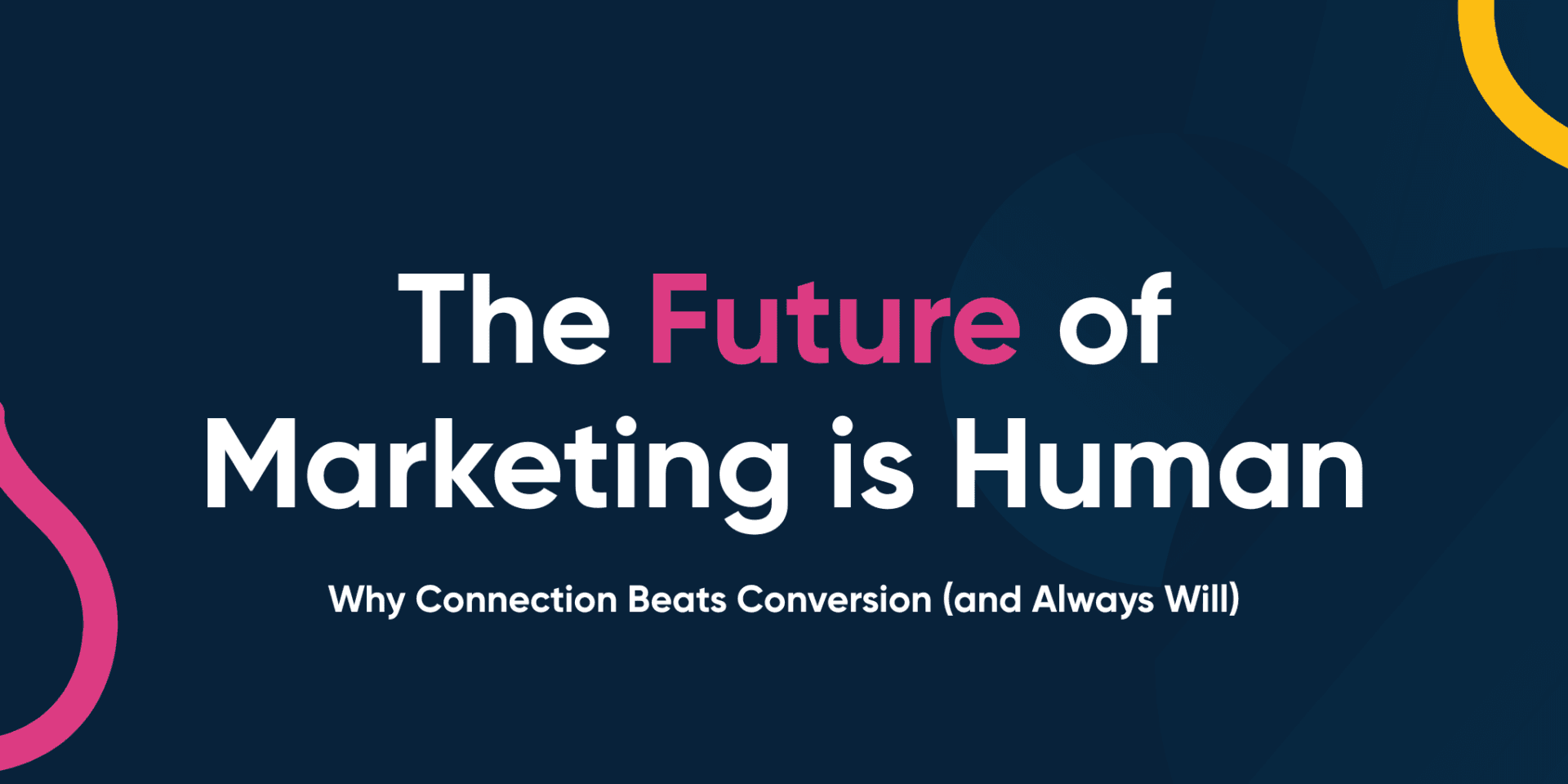The Future of Marketing is Human
Why Connection Beats Conversion (and Always Will)
In a world where everything’s being optimised, automated, and analysed to the nth degree, it’s easy to forget something important: your audience is human.
Not a data point.
Not a click-through rate.
Not a persona with a nice alliterative name.
Just… people. With feelings, needs, distractions, and about three seconds of attention to give you.
At TLH, we love smart marketing. We use the data, we test the tools, and we stay ahead of the curve. But more and more, we’re seeing that the brands cutting through the noise aren’t the ones with the flashiest campaigns or the biggest budgets. They’re the ones who know how to make people feel something and understand what their audience wants.
So, as we look ahead to where marketing is going, here’s one trend we’re betting on: human connection will matter more than ever.
Why We’re Shifting From “Sell” to “Serve”
People are tired of being sold to. They scroll past the slick ads. They ignore the generic emails. They know when you’re just after their money.
But they stop and pay attention when something feels real. Helpful. Relatable. Maybe even a little bit vulnerable.
The brands that are winning in 2025? They’re shifting the mindset from “How do we convert this person?” to “How can we connect with them?”
Every click starts with trust. And trust is built through clarity, consistency, and showing you actually care.
What “Human-Centred Marketing” Actually Looks Like
This isn’t just about throwing a few emojis into your copy or showing a team photo every now and then (though both are great!).
Human-centred marketing means:
- Telling stories over shouting sales
- Asking questions instead of making assumptions
- Listening more than you talk
- Creating value before asking for anything in return
It’s about empathy, not ego. Relevance, not reach. And quality relationships over quantity of leads.
The Role of Tech in a Human-Led Future
We get it, AI is everywhere right now. And yes, it’s amazing. It can speed things up, help us personalise at scale, and surface insights we’d miss on our own.
But here’s the thing: tech should support connection, not replace it.
If we use AI to automate away the soul of what we’re doing, we’ve missed the point. But if we use it to free up space for creativity, empathy, and genuine engagement, that’s the sweet spot.
Case in Point: Brands Doing It Well
Some quick examples of “human-first” marketing we love seeing:
- Wanderdoll – They had their first ‘brand trip’ in May, and they hit the ball out the park. They recorded behind-the-scenes content showing the highs and lows of what it has taken for them to get to that point.
- Grace Beverly – A 27-year-old businesswoman who is also an influencer but uses her platform to show the depths of what it takes to run a business, being an influencer and also being an actual human.
This kind of marketing doesn’t just drive clicks, it builds community. And that’s where real brand loyalty lives.
So What Does This Mean for You?
Whether you’re a solo founder or scaling a bigger brand, this shift isn’t about working harder, it’s about showing up differently.
A few questions to ask yourself:
- Are we talking at our audience, or with them?
- Do our values show up in our content?
- Are we prioritising quick wins, or long-term relationships?
- Would we enjoy following our own brand?
If you’re feeling disconnected from your marketing, chances are your audience is too. Time to bring the human back.
Final Thoughts
The future of marketing isn’t just smarter. It’s softer. It’s more curious. More creative. More real.
And here’s the best part: you don’t need a big budget to connect, you just need a clear voice, a little courage, and a willingness to listen.
Want help finding that voice? That’s what we do best.
Let’s discuss your marketing strategy and how we can make it feel more authentic to you (and less like every other brand in the feed).
